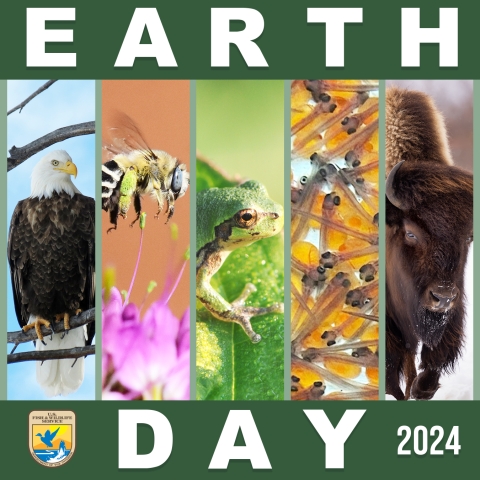At the U.S. Fish and Wildlife Service, we work every day toward a future where people and nature thrive in an interconnected way, and where every community feels part of and committed to the natural world around us.
That’s our Service Vision on Earth Day and every day.
The President and Secretary Haaland have been clear that tackling the climate and biodiversity crises is critical. Climate change is having a profound impact on fish, wildlife, and plants and their habitats, which means it also transforming the natural systems that support all of us – from the air we breathe, water we drink, and food we eat to the species that amaze us, the outdoors we love, and the places we call home.
At the Service, we are creating a legacy of ecosystem resiliency that can better withstand environmental challenges and help wildlife and human communities adapt to change.
Conservation, as we see it and do it, delivers co-benefits -- including cleaner air, higher water quality, healthier habitats, open spaces for recreation and wellbeing, and more climate-resilient and economically-viable communities.
The Administration’s America the Beautiful initiative and its Investing in America agenda, through the implementation of the Bipartisan Infrastructure Law Bipartisan Infrastructure Law
The Bipartisan Infrastructure Law (BIL) is a once-in-a-generation investment in the nation’s infrastructure and economic competitiveness. We were directly appropriated $455 million over five years in BIL funds for programs related to the President’s America the Beautiful initiative.
Learn more about Bipartisan Infrastructure Law and the Inflation Reduction Act, are providing the Service with unprecedented funding that is enabling us to connect people with nature and show that on-the-ground conservation efforts make a helpful impact to nature and people.
Our approach is based on collaboration and collective action for lasting solutions. We’re proud to work side by side with our Department of the Interior and Federal Government1 colleagues, States, Tribes and Indigenous communities, non-governmental organizations, private landowners, and other partners.
We also strive to be an asset to local communities, especially those that have historically most often suffered environmental injustice including pollution, underinvestment in infrastructure, lack of green space, and disproportionate impact from climate change. Inclusive and equitable partnerships are one of many ways the Service furthers its conservation mission and fulfills our public service promise.
Since 1970, Earth Day has been observed annually on April 22 as a day to raise environmental awareness. Let this day serve as our own reminder that we can make a difference, both as a individuals and as a community to help nurture a healthier, interconnected planet for everyone.
As individuals, we can each take action to pitch in where we live. Saving energy, planting native plants and pollinator gardens, recycling and reducing waste, and volunteering on local clean-up projects are just a few ways to help reduce the harm of pollution and climate change, while also supporting fish, wildlife and plant conservation.
We’re harnessing the full power of our Service workforce to ensure a sustainable future, and I encourage you to join us in helping nature thrive on Earth Day and every day.
--Martha Williams
1U.S. Government Publishing Office Style Manual (govinfo.gov)




